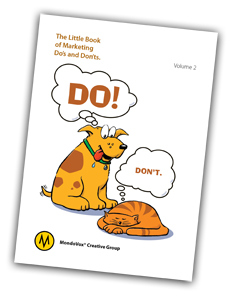 You can create a buzz with dimensional packages, to say nothing of generating valuable leads. Here’s how to ensure that recipients will not only open your dimensional package, but will open it first.
You can create a buzz with dimensional packages, to say nothing of generating valuable leads. Here’s how to ensure that recipients will not only open your dimensional package, but will open it first.
Do
- Put something inside that is valuable, fun—or preferably both.
- Make the sales message simple, to the point and easy to find.
- Use a parcel delivery service rather than the USPS, if possible.
- Tie the contents into what you are selling, though you don’t always need to be literal—copy can make a strong tie-in.
- Use a standard size box if you want to minimize costs.
- Think beyond paperboard if you have the budget and really want to stand out—try wood or fabric, for instance.
- Incorporate other channels—a pURL or a QR Code on an enclosure can add more involvement and personalization.
- Demand accountability from the sales force—involve them as much as possible.
Don’t
- Use a dimensional package with the intention of closing a sale—it’s a lead generator.
- Make the contents so expensive they look like a bribe, though you can get by with a bit more if your target is owners of independent businesses.
- Think that boxes are your only alternative—tubes as well as lumpy mailings or sturdy, gusseted envelopes can also work.
- Get lost in cleverness at the expense of an action-generating message.
- Do anything that would make your package look potentially dangerous or prankish.
- Forget to use a stringent pre-qualification process—dimensional mailers are too expensive to waste.
- Send more mailers than your team can follow-up with promptly.
By Larry Bauer
![]()
 Missed Getting Your Copy of The Little Book of Marketing Do’s & Don’ts? Not to worry. We’ve made digital versions available via SlideShare. The Little Book of Marketing Do’s & Don’ts is a collection of the most viewed “Do’s & Don’ts” published by our MondoBeat newsletter including:
Missed Getting Your Copy of The Little Book of Marketing Do’s & Don’ts? Not to worry. We’ve made digital versions available via SlideShare. The Little Book of Marketing Do’s & Don’ts is a collection of the most viewed “Do’s & Don’ts” published by our MondoBeat newsletter including:
- Taglines
- Print Advertising
- Referrals
- Trade Shows
- Corporate Brochures
- Direct Mail
- Thought Leadership
- White Papers
Simply visit our SlideShare page to download your complimentary copy.








